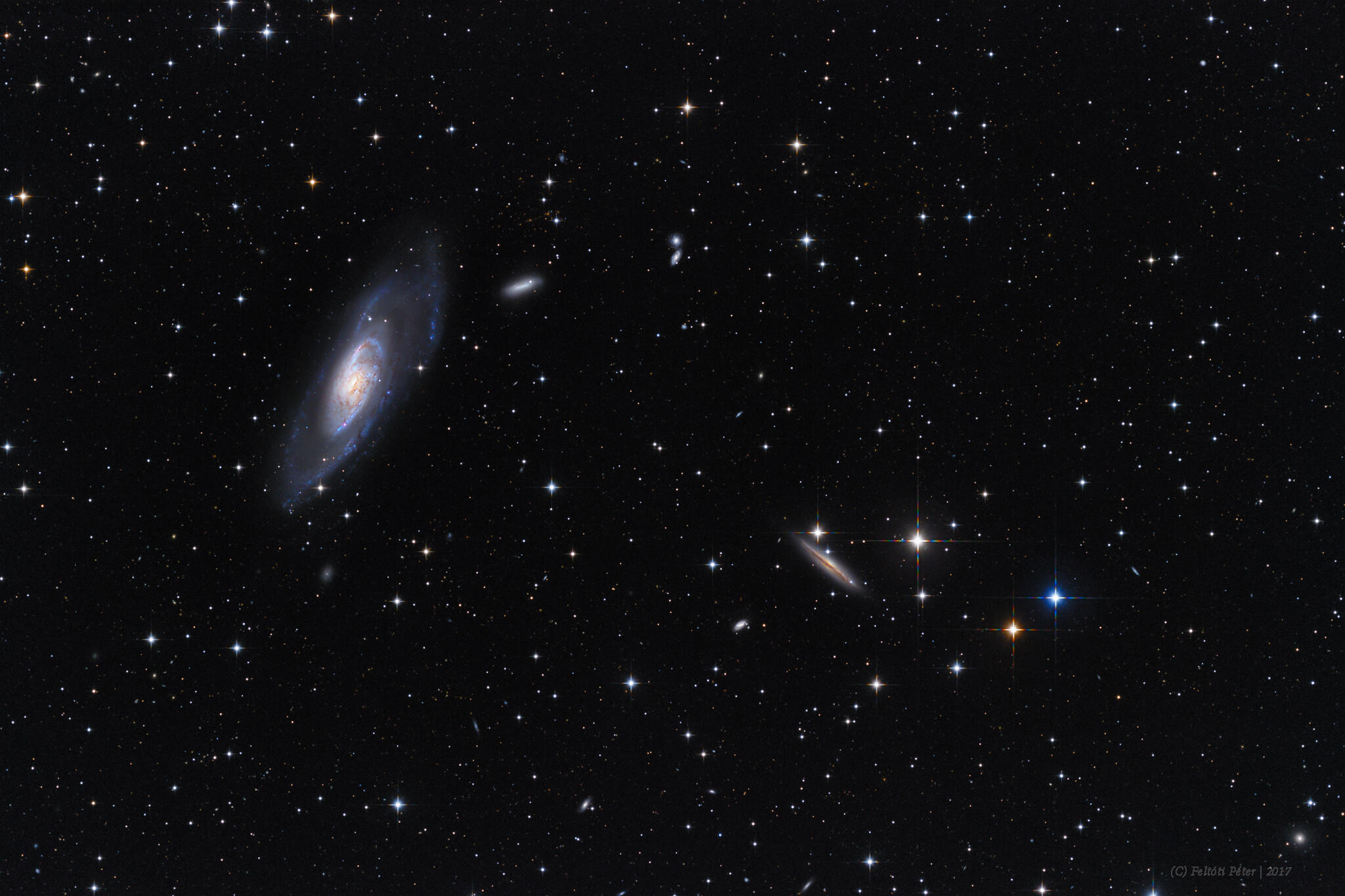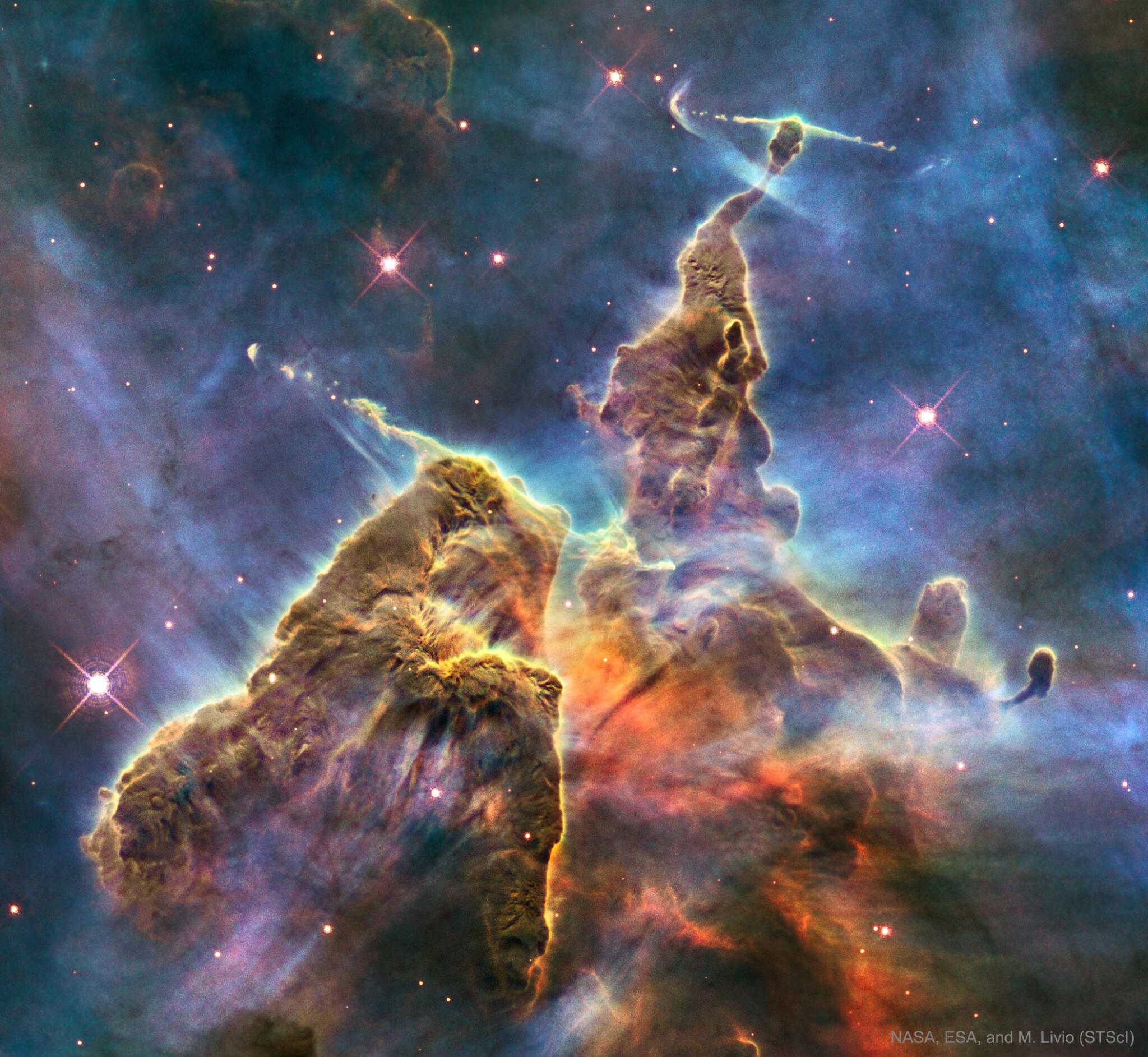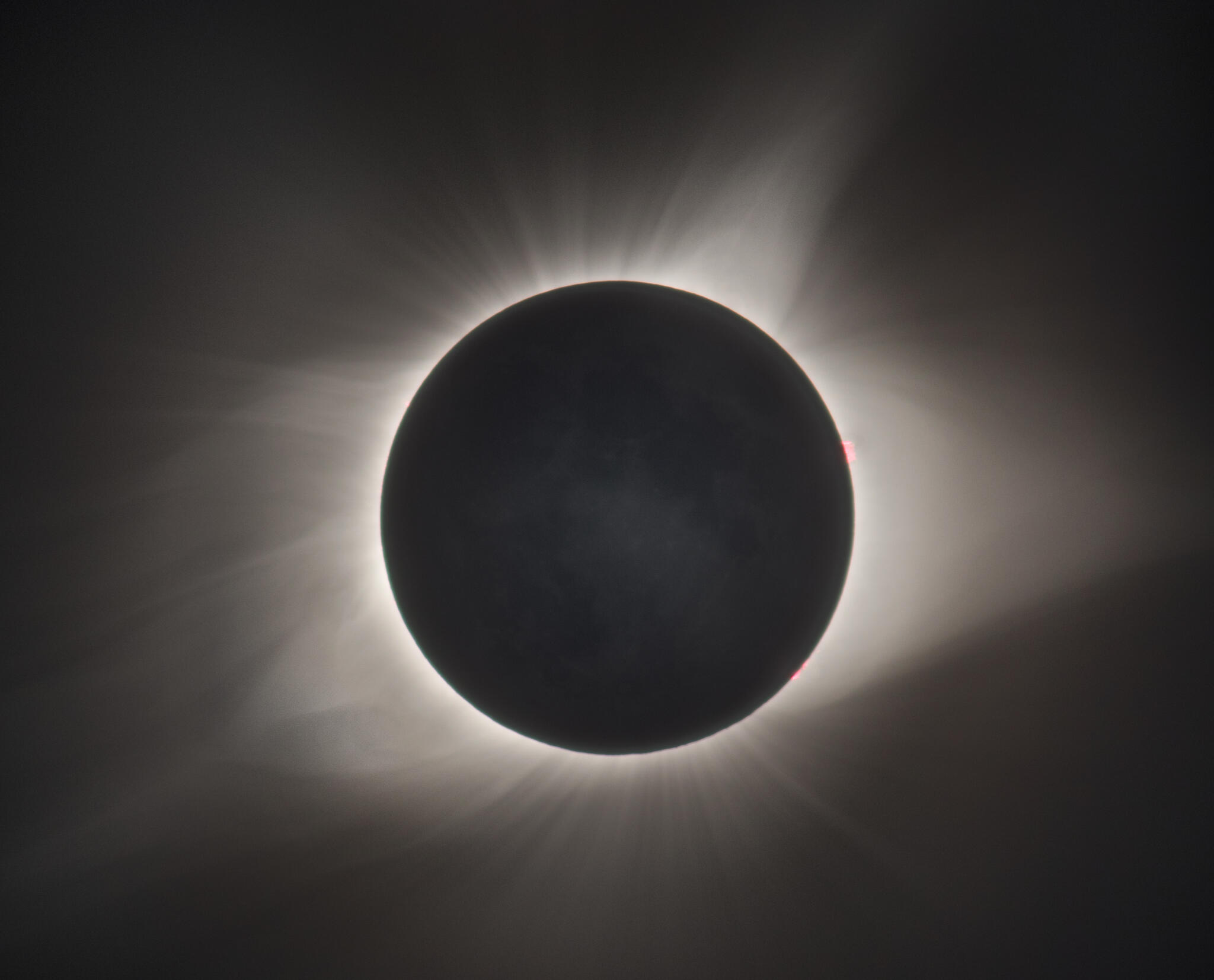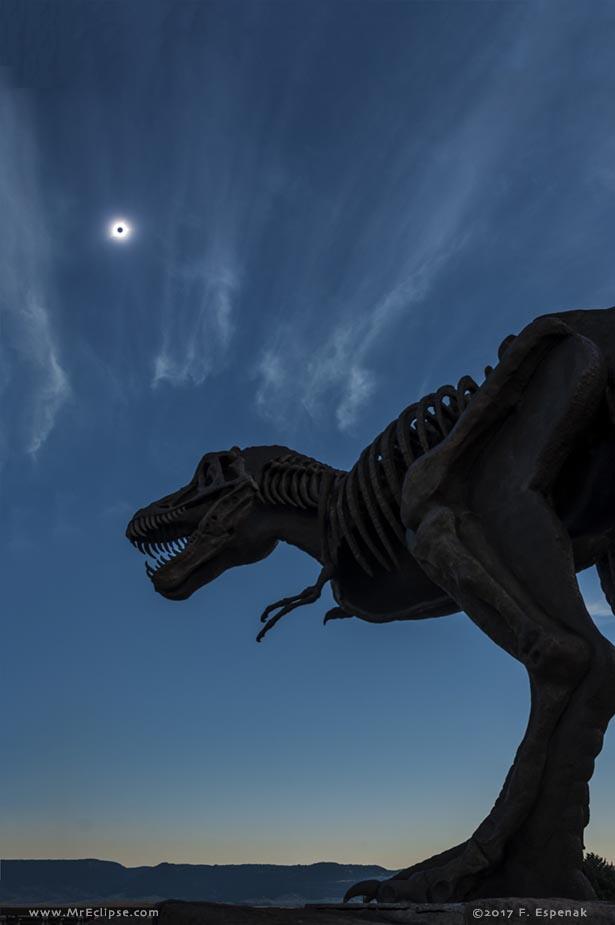Astronomy Picture of the Day

Big, bright, beautiful spiral, Messier 106 dominates this cosmic vista. The two degree wide telescopic field of view looks toward the well-trained constellation Canes Venatici, near the handle of the Big Dipper. Also known as NGC 4258, M106 is about 80,000 light-years across and 23.5 million light-years away, the largest member of the Canes II galaxy group. For a far away galaxy, the distance to M106 is well-known in part because it can be directly measured by tracking this galaxy's remarkable maser, or microwave laser emission. Very rare but naturally occuring, the maser emission is produced by water molecules in molecular clouds orbiting its active galactic nucleus. Another prominent spiral galaxy on the scene, viewed nearly edge-on, is NGC 4217 below and right of M106. The distance to NGC 4217 is much less well-known, estimated to be about 60 million light-years. Image Credit & Copyright: Peter Feltoti

It's stars versus dust in the Carina Nebula and the stars are winning. More precisely, the energetic light and winds from massive newly formed stars are evaporating and dispersing the dusty stellar nurseries in which they formed. Located in the Carina Nebula and known informally as Mystic Mountain, these pillar's appearance is dominated by the dark dust even though it is composed mostly of clear hydrogen gas. Dust pillars such as these are actually much thinner than air and only appear as mountains due to relatively small amounts of opaque interstellar dust. About 7,500 light-years distant, the featured image was taken with the Hubble Space Telescope and highlights an interior region of Carina which spans about three light years. Within a few million years, the stars will likely win out completely and the entire dust mountain will evaporate. Image Credit: NASA, ESA, and M. Livio (STScI).

Albert Einstein's general theory of relativity, published over 100 years ago, predicted the phenomenon of gravitational lensing. And that's what gives these distant galaxies such a whimsical appearance, seen through the looking glass of X-ray and optical image data from the Chandra and Hubble space telescopes. Nicknamed the Cheshire Cat galaxy group, the group's two large elliptical galaxies are suggestively framed by arcs. The arcs are optical images of distant background galaxies lensed by the foreground group's total distribution of gravitational mass. Of course, that gravitational mass is dominated by dark matter. The two large elliptical "eye" galaxies represent the brightest members of their own galaxy groups which are merging. Their relative collisional speed of nearly 1,350 kilometers/second heats gas to millions of degrees producing the X-ray glow shown in purple hues. Curiouser about galaxy group mergers? The Cheshire Cat group grins in the constellation Ursa Major, some 4.6 billion light-years away. Image Credit: X-ray - NASA / CXC / J. Irwin et al. ; Optical - NASA/STScI.

A darkened sky holds bright planet Venus, the New Moon in silhouette, and the shimmering corona of the Sun in this image of a total solar eclipse. A composite of simultaneous telephoto and wide angle frames it was taken in the path of totality 18 years ago, August 11, 1999, near Kastamonu, Turkey. That particular solar eclipse is a member of Saros 145. Known historically from observations of the Moon's orbit, the Saros cycle predicts when the Sun, Earth, and Moon will return to the same geometry for a solar (or lunar) eclipse. The Saros has a period of 18 years, 11 and 1/3 days. Eclipses separated by one Saros period belong to the same numbered Saros series and are very similar. But the path of totality for consecutive solar eclipses in the same Saros shifts across the Earth because the planet rotates for an additional 8 hours during the cycle's fractional day. So the next solar eclipse of Saros 145 will also be a total eclipse, and the narrow path of totality will track coast to coast across the United States on August 21, 2017. Image Credit & Copyright: Tunç Tezel (TWAN), Alkim Ün.

During a total solar eclipse, the Sun's extensive outer atmosphere, or corona, is an inspirational sight. Streamers and shimmering features visible to the eye span a brightness range of over 10,000 to 1, making them notoriously difficult to capture in a single photograph. But this composite of telescopic images covers a wide range of exposure times to reveal the crown of the Sun in all its glory. The aligned and stacked digital frames were taken in clear skies above Stanley, Idaho in the Sawtooth Mountains during the Sun's total eclipse on August 21. A pinkish solar prominence extends just beyond the right edge of the solar disk. Even small details on the dark night side of the New Moon can be made out, illuminated by sunlight reflected from a Full Earth. Image Credit & Copyright: Derek Demeter (Emil Buehler Planetarium).

We live in an era where total solar eclipses are possible because at times the apparent size of the Moon can just cover the disk of the Sun. But the Moon is slowly moving away from planet Earth. Its distance is measured to increase about 1.5 inches (3.8 centimeters) per year due to tidal friction. So there will come a time, about 600 million years from now, when the Moon is far enough away that the lunar disk will be too small to ever completely cover the Sun. Then, at best only annular eclipses, a ring of fire surrounding the silhouetted disk of the too small Moon, will be seen from the surface of our fair planet. Of course the Moon was slightly closer and loomed a little larger 100 million years ago. So during the age of the dinosaurs there were more frequent total eclipses of the Sun. In front of the Tate Geological Museum at Casper College in Wyoming, this dinosaur statue posed with a modern total eclipse, though. An automated camera was placed under him to shoot his portrait during the Great American Eclipse of August 21. Image Credit & Copyright: Fred Espenak (MrEclipse.com).


No comments yet.